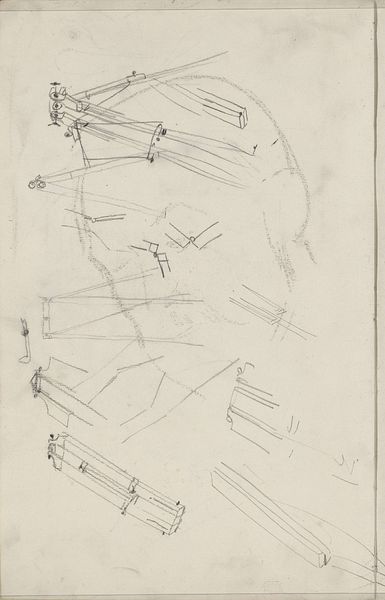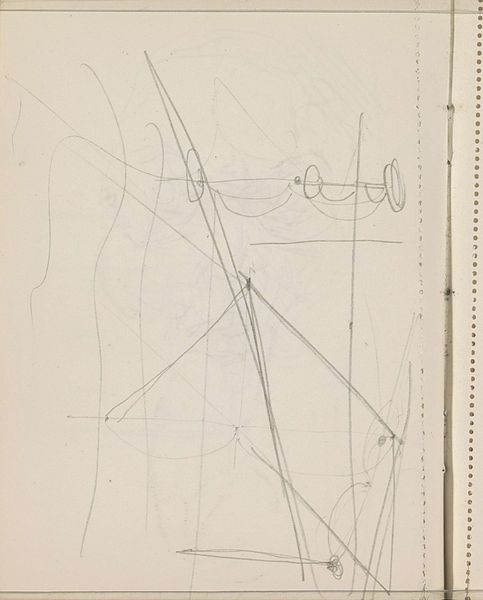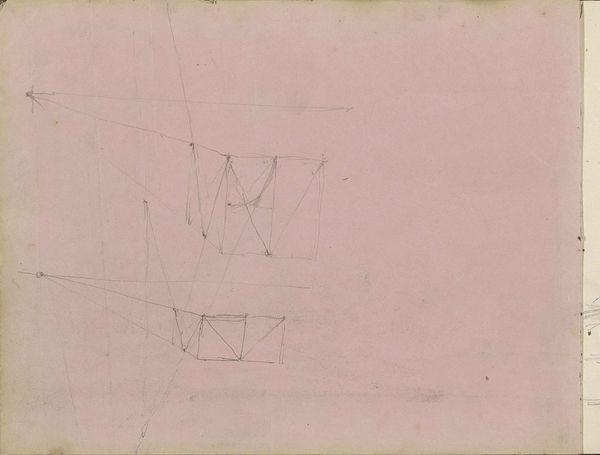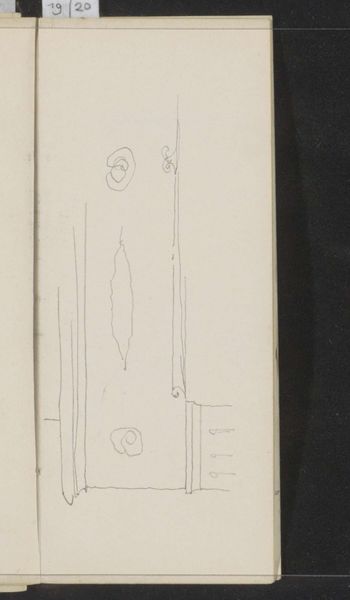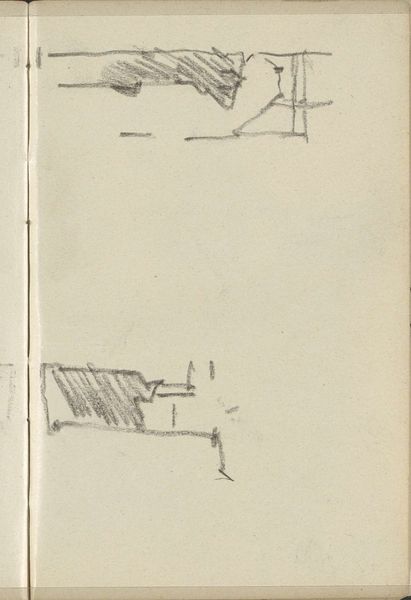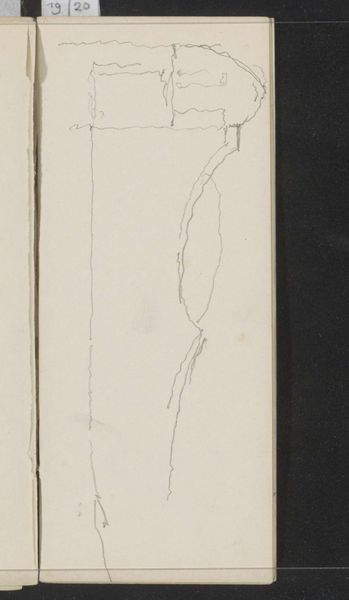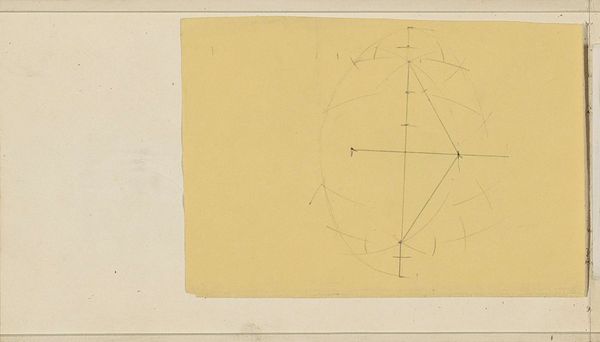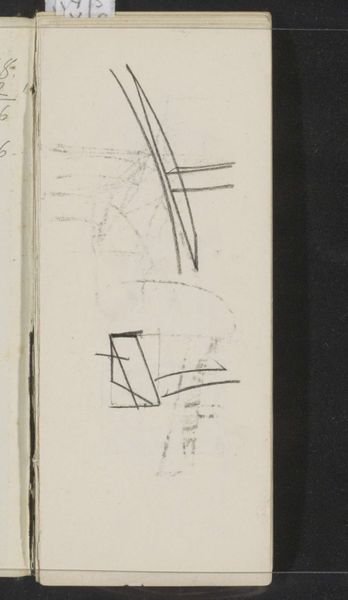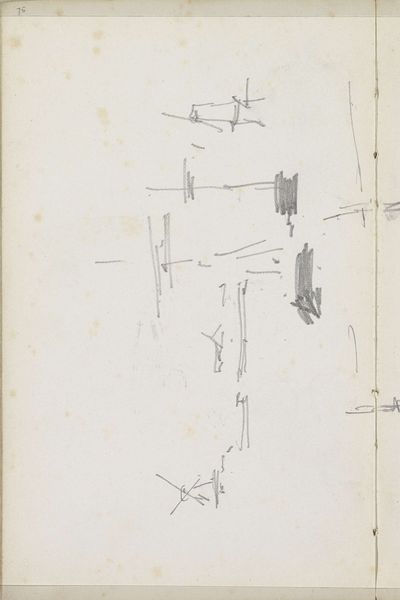
drawing, paper, pencil
#
drawing
#
paper
#
abstract
#
geometric
#
pencil
#
modernism
Copyright: Rijks Museum: Open Domain
Editor: This is "Studieblad," a pencil drawing on paper by George Hendrik Breitner, made sometime between 1867 and 1923. It's quite abstract, mostly lines and geometric shapes. It looks like architectural studies or sketches of city buildings. I'm curious, how do you interpret this work, knowing that Breitner documented Amsterdam so vividly? Curator: That’s an astute observation. Considering Breitner’s commitment to capturing the zeitgeist of Amsterdam, these geometric forms become incredibly evocative. It is vital to remember that Amsterdam in the late 19th, early 20th century, underwent radical urban transformations to modernize infrastructure and living conditions, especially around public spaces, reshaping both labor and public perceptions of the city. Editor: So, do you think these lines represent not just buildings, but perhaps the rapid change, and social engineering, that Amsterdam was experiencing? Curator: Precisely! These lines and forms become fragments of a larger urban narrative. His seemingly "abstract" style becomes a way to capture the impermanence of the environment. We should see Breitner’s decision to represent the architectural aspects, in the process of modernising and reshaping Amsterdam, as part of this discussion. What do you think about how institutions like museums represent or maybe, fail to represent rapid social change? Editor: It's a challenge. Sometimes museums feel like they freeze a moment in time, whereas a work like this seems to capture something more fluid. Curator: Indeed, and understanding the socio-political backdrop helps us appreciate the intention. It makes this “Studieblad” far from just simple sketches, don't you think? Editor: Absolutely. I see now how looking at the history of Amsterdam really enriches the way we should view and appreciate his work.
Comments
No comments
Be the first to comment and join the conversation on the ultimate creative platform.

